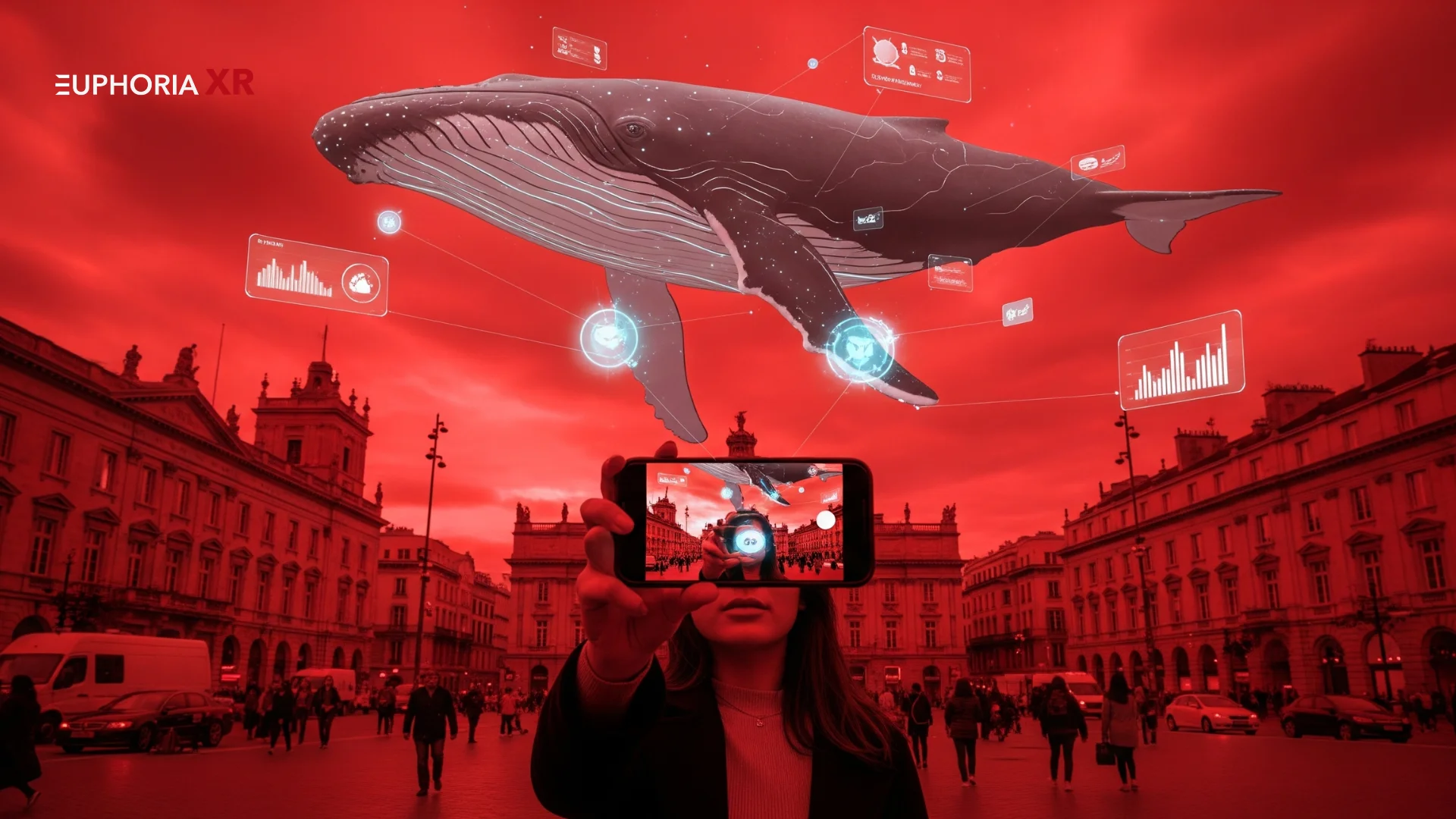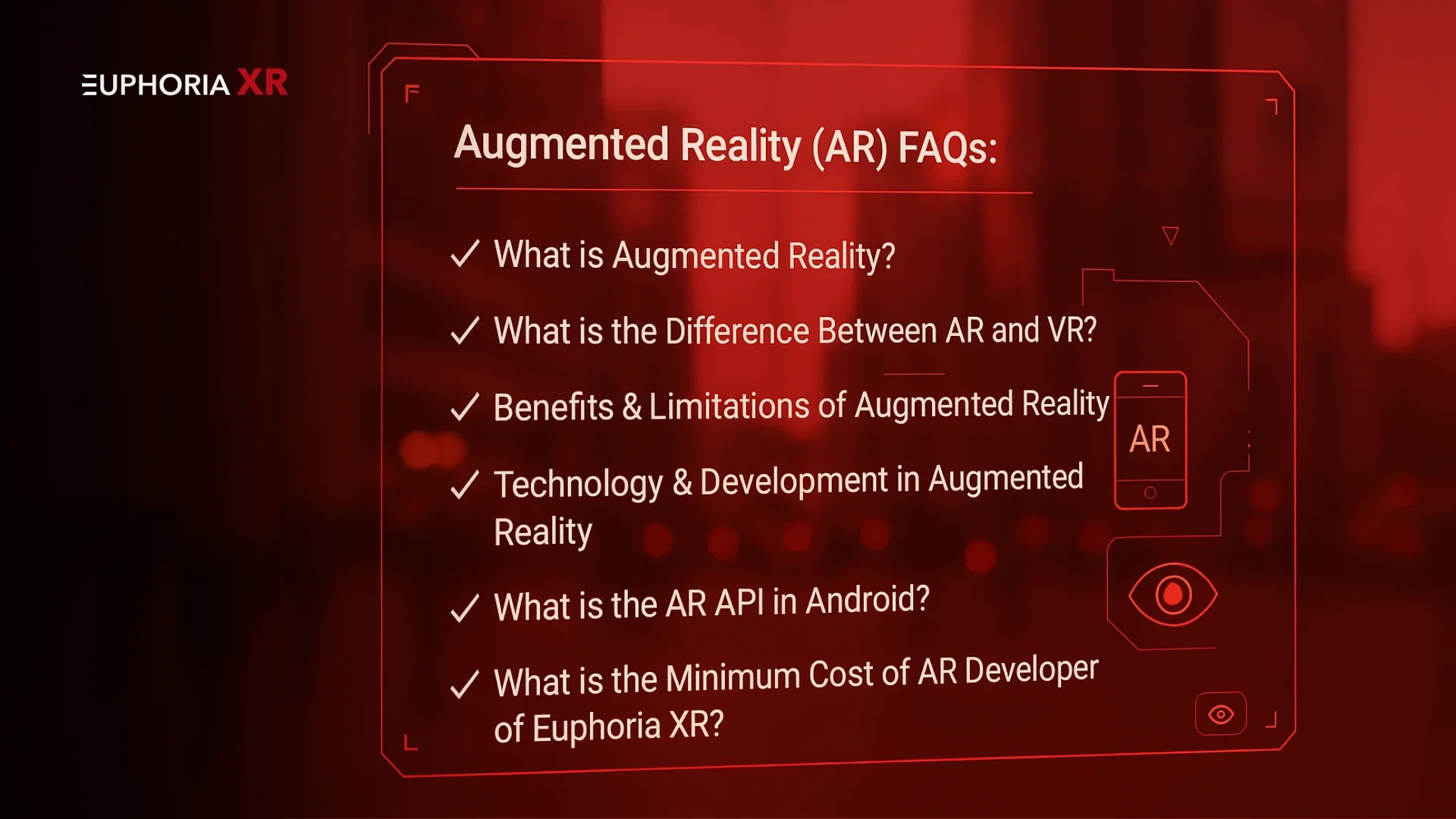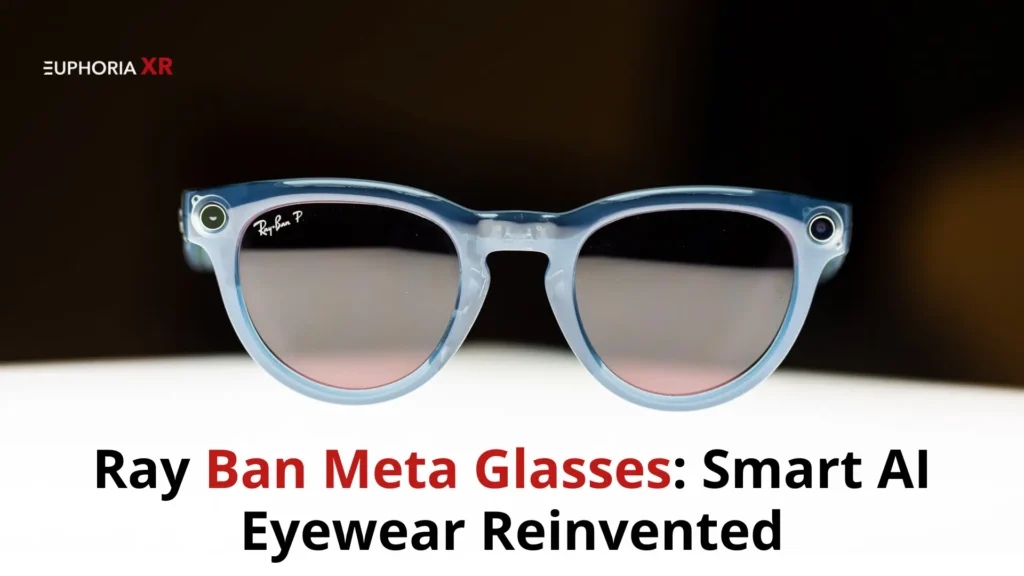The first time I tried an Augmented Reality, I was standing in front of an empty wall holding my phone. All of a sudden, a complete bookshelf appeared, in perfect position as though it had been in plain view all the time. This particular experience helped me understand that AR is not just fun; it is a technology that is now set to transform the way we shop, learn, and even talk to each other. Since people have asked me the same questions repeatedly, what is AR? How does it work? What makes it different from VR? This Augmented Reality question-and-answer guide tries to provide answers to those questions in one place.
Fundamentals of Augmented Reality (AR)

What is Augmented Reality (AR)?
AR is a technology whereby digital content (images, text, or 3D models) is overlaid on a real-world image. In comparison to Virtual Reality, AR does not replace your environment but rather augments it, adding interactivity to what you see and feel in real-time.
How does AR work?
AR works by linking to a multimedia database of some sort of interactions between the individual and the environment, which in turn form part of the visual experience or the self-perception of the person.
This is done by using cameras, sensors, and software to scan what is around you and then putting digital content into context. An example of how this process might work is that an AR application would identify a level surface (such as your desk) and render a 3D object that would appear to be affixed to the real world.
What are the different types of AR? (marker-based, markerless, projection-based, superimposition)
- Marker-based AR: The system works with an image or a QR code as a trigger to show digital information.
- Markerless AR: Utilizes the GPS, sensors, and SLAM (simultaneous localization and mapping) to provide a location-based display.
- Projected AR: Plays visuals onto physical surfaces.
- Superimposition AR: Overrides or animates a physical item with a digital item (e.g., virtual try-on).
What are the 3 Core Elements of AR?
- Hardware: Cameras, sensors, and processors that receive and analyze the world.
- Software/Algorithms: The algorithm that reads the information and creates AR.
- Content: Information (3d objects, graphics, text) superimposed on the real world.
What is the Difference Between AR and VR?
Augmented Reality (AR): It is the addition of computer-generated data and information about the real world.
Virtual Reality (VR): This is an entirely enclosed digital world that is used instead of reality.
AR can be viewed as a digital assistant in your life, whereas VR brings you to an entirely new world.
What exactly is Virtual Reality (VR)?
Virtual Reality is an immersive technology that surrounds users in a completely simulated environment. Wearing headsets such as Oculus or HTC Vive, wearers can interact with 3D digital environments that shut out the real world.
Which is better: AR or VR?
Neither is better; it depends on the aim. The best use of AR occurs when you require combined (or blended) digital information and the real world (retail, navigation, instruction). VR is more suitable when it comes to full immersion (gaming, simulations, training). The scope of deploying AR and VR is increasingly large because, in most cases, they are not mutually exclusive but rather form part of the larger XR (Extended Reality) ecosystem.
Benefits & Limitations of Augmented Reality
What are the prime benefits of AR?
The greatest strength of AR is that it connects the digital and the physical worlds. It makes interactions more enjoyable, gives real-time information, better decisions, etc, and improves customer experiences. In terms of business, AR enhances the effectiveness of marketing, product visualisation, and customer confidence, and for users, it becomes easy and immersive to both learn and shop.
What are the advantages of AR in education and training?
AR makes abstract concepts tangible. In the classrooms, learners may learn 3D models of the human body, planets, or historical monuments. AR can be applied in professional education to train complex tasks that involve risk, such as medical procedures and equipment repair. This enhances appreciation, memory retention, and the sharpening of skills.
What limitations does AR have?
AR, despite its promise, continues to encounter difficulty:
- Expensive pricing of tailor-made AR use.
- Hardware constraints, as not every device properly supports AR.
- Barriers to (user) adoption, since so many do not know about AR.
- Performance problems in the aspect of slow graphics or low tracking in low-light environments.
- Privacy issues, and because AR applications tend to use cameras and GPS, location tracking.
How can AR enhancements align with the real world in real time?
The tracking is in real time and is achieved by SLAM (Simultaneous Localization and Mapping), sensors, and computer vision algorithms. These tools scan the physical environment, sense surfaces, and can map the real world instantly. This enables the virtual content, such as furniture in a room or signposts on a street remain located in one place and realistic as it is moved around by the user.
Technology & Development in Augmented Reality
What programming languages are AR apps written in?
AR apps are normally composed in a combination of programming languages. C# and C++ are well used in AR game engines such as Unity and Unreal. Native Android and iOS AR is usually developed in Java, Kotlin, and Swift. JavaScript and WebXR APIs are widely used with web-based AR.
What tools & frameworks are used to build AR apps?
Among the most popular AR development tools, we can probably name:
- ARKit (Apple): iOS AR experiences.
- ARCore (Google): In Android AR apps.
- Vuforia: A flexible AR SDK capable of being used on mobile devices as well as smart glasses.
- Unity and Unreal Engine: Game engines that are commonly used to build immersive AR applications.
- WebXR: Browser-based AR.
What is the AR API in Android?
AR experiences on Android are driven by the ARCore API developed by Google. The system offers the developer tools such as motion tracking, environmental perception, and light estimation. On Android, new features powered by ARCore include the ability of apps to find surfaces, detect depth, and place digital objects in the surroundings in an intelligent way.
How does AR use 3D spatial modeling?
AR employs a 3-dimensional spatial modeling to scan and map the physical environment. AR systems manage to recreate the real world by identifying surfaces, depth, and geometry. It makes AR feel like a real object, and it enables virtual items to stick to a surface, preventing them from floating away, such as furniture to the floor or a digital sign to a wall.
What skills are needed for AR development?
- Development of AR also needs a fusion of technical and creative competencies:
- Knowledge of C#, C++, Java, Swift, and JavaScript Programming.
- Have experience in AR frameworks such as ARKit, ARCore, or Vuforia.
- 3D sculpting & design (Blender, Maya, 3ds Max).
- Foundations of computer vision and spatial mapping.
- Immersive environment UI/UX design.
What to look for in great AR developers?
Excellent AR developers need to be both technically knowledgeable and creative. Look for:
- Practice with AR work or applications.
- Familiarity with AR stacks (Unity, Unreal, ARKit, ARCore).
- Powerful troubleshooting of live tracking and performance tuning.
- Knowledge of where the 3D design and user experience fit in AR.
- Creative Skills: Since AR often involves a bit of thinking outside the box, to developing.
AR Companies & Ecosystem
Who are the top AR companies today?
Examples of the top AR companies are:
- Niantic (the authors of Pokémon Go fame, with their huge-scale AR gaming).
- Apple (ARKit, AR glasses).
- Google (ARCore, Google Lens, AR navigation).
- Snap Inc. (the first creators of AR filters and lenses).
- Microsoft (HoloLens as an enterprise AR).
- Meta (integration of AR glasses and metaverse).
- TC Vuforia (commercial augmented reality developer tools).
Which brands are currently utilizing AR?
Several major global brands use AR to create a greater connection with their customers:
- IKEA: AR app that helps to place furniture in the house.
- Nike & Adidas: Shoes and apparel, Virtual try-ons.
- Sephora and LOréal: AR-based beauty try-on applications.
- Mercedes-Benz and MW: AR manuals and visualization of cars.
- Amazon: AR View of product placement.
What are some best-known AR apps?
- Pokémon Go: Location-based augmented reality gaming.
- IKEA Place: Placing furniture in real-world environments.
- Google Lens: AR-Enabled image recognition.
- Snapchat & Instagram Lenses: Interactive Augmented Reality filters
- Measure (Apple/Google): Digital measuring tape with AR.
The Future of Augmented Reality
When will AR become mainstream?
AR will become a mainstream technology around 2027-30 as the AR glasses and 5G networks, and compatible hardware get commonplace. Businesses are exhibiting early adoption in the form of training, retailing, and remote cooperation.
What is the scope of AR in the coming years?
Augmented Reality development has huge use cases: it can change retail, education, healthcare, real estate, and manufacturing. As the AR hardware capabilities develop, they will be less focused on smartphones and move towards the use of lightweight eyewear, thus making the use of AR more hands-free and natural. According to analysts, the AR will form an indispensable digital layer in everyday routines, much like the internet or smartphones do today.
What is the future of AR with AI, wearables, and metaverse integration?
The future of the AR is converging:
- AI + AR: More intelligent object identification, customized overlays, and helpful hints.
- Wearables: Contact lenses and AR glasses that bring the experience seamless.
- Integration into Metaverse: AR is used as the mediator between real life and digital; users simultaneously engage in both.
Combined, the innovations will make the world natural within which digital information has been integrated into all we see and do.
About EuphoriaXR’s Services
What services does EuphoriaXR offer?
EuphoriaXR is an award-winning AR/VR/AI development company, focusing on the development of AR, VR, MR, and Metaverse solutions. They provide the services of:
- AR/VR App Development: Unique applications in education, healthcare, retail, and entertainment.
- 3D Content Creation and Animation: Quality 3D models, simulations, and other interactive items.
- Immersive Training Solutions: Virtual training practices in corporate and industrial fields.
- Metaverse Development: Virtual workspaces, showrooms, and team workspaces.
- Gamified Experiences: Exciting AR/VR-based games and brand engagements.
- Enterprise XR Solutions: Custom AR/VR solutions to business processes, marketing, and customer experiences.
EuphoriaXR is dedicated to creating immersive, interactive, and scalable experiences that enable brands to connect with their audiences, train their employees in a more efficient manner, and introduce next-generation digital solutions.
Conclusion
AR is no longer a vision of the future; it is already influencing our shopping, learning, training, and interaction with the world. AR is increasingly found in social media filters as well as on the enterprise level in medical and educational settings, and the technology has seen rapid development.
As the questions we have answered in this guide demonstrate, AR should not be considered interesting but purely experimental: it helps to resolve real-life issues, improve experiences, and create new possibilities both offered to businesses and individuals. AR is on the track of seamless integration with AI, wearables, and the metaverse; this is why it is going to serve as an extension of our everyday lives.
The takeaway? The question is no longer whether AR will become our future but when. The ones who begin digging into it now will be on the left side of the curve when they become a normal object of the digital environment.















